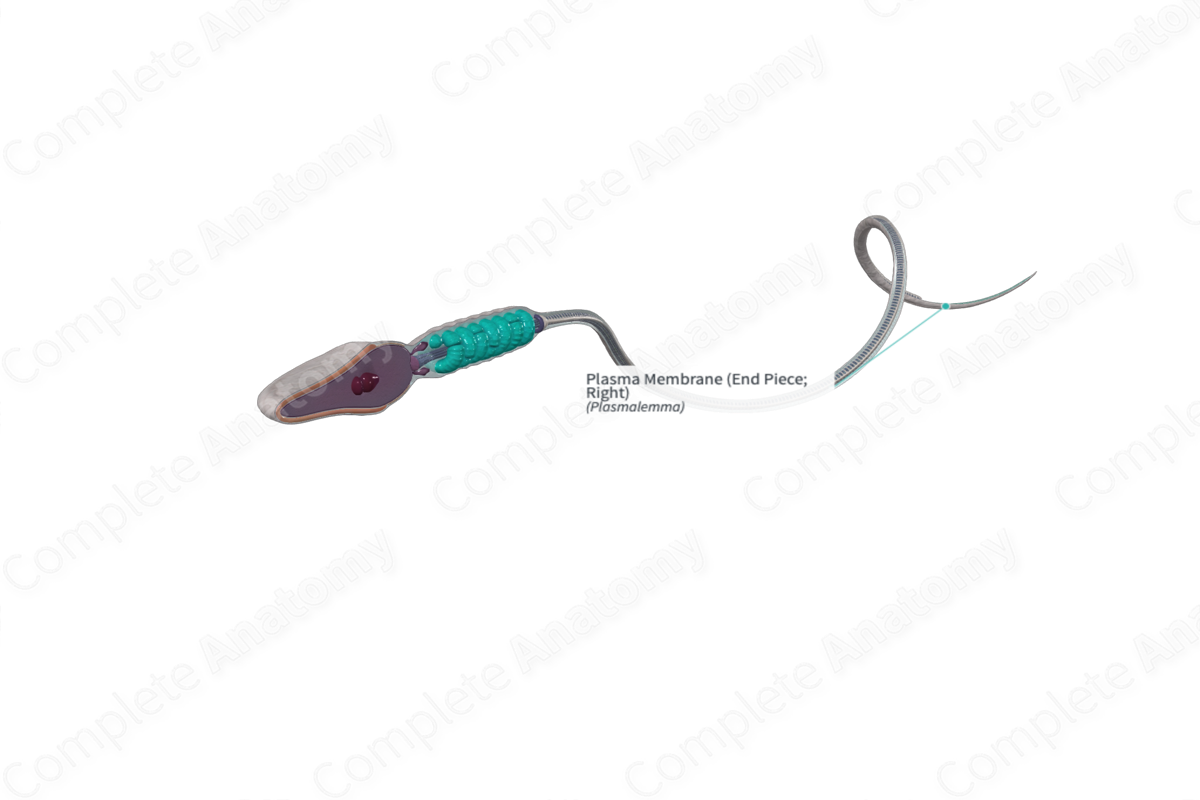
Quick Facts
The plasma membrane is the structure enveloping a cell, enclosing the cytoplasm and forming a selective permeability barrier; it consists of a lipid bilayer with integral and peripheral proteins and contains channels and pumps to transport substances across the membrane, as well as receptors to receive stimuli from the external environment and transduce them into intracellular signals (Dorland, 2011).
Related parts of the anatomy
Structure and/or Key Feature(s)
The sperm’s plasma membrane is a dynamic structure and is unique when compared with that of somatic cells. It is divided into various domains based on its location, composition, and function.
In the sperm head, there are two notable regions of the plasma membrane, the acrosomal region and the postacrosomal region. The plasma membrane that surrounds the tail aspect of the sperm is divided into the middle piece, the principal piece, and the distal piece domains (Toshimori, 2000).
Anatomical Relations
The plasma membrane is the outermost part of the sperm and it encases the entirety of the sperm cell.
Function
The plasma membrane plays a number of roles, which are vital for fertilization to occur. Modification of the plasma membrane is paramount for the initiation of processes, such as capacitation, acrosome reaction, and binding of the sperm head with the plasma membrane of the ovum, to occur. Most of these modifications occur as the sperm passes through the epididymis and in the uterine tube, oviduct (or fallopian tube) of the female reproductive tract (Toshimori, 2000).
References
Dorland, W. (2011) Dorland's Illustrated Medical Dictionary. 32nd edn. Philadelphia, USA: Elsevier Saunders.
Toshimori, K. (2000) Sperm Plasma Membrane Modifications Associated with Fertilization in Mammals. Journal of Reproduction and Development, 46, 65-78.
